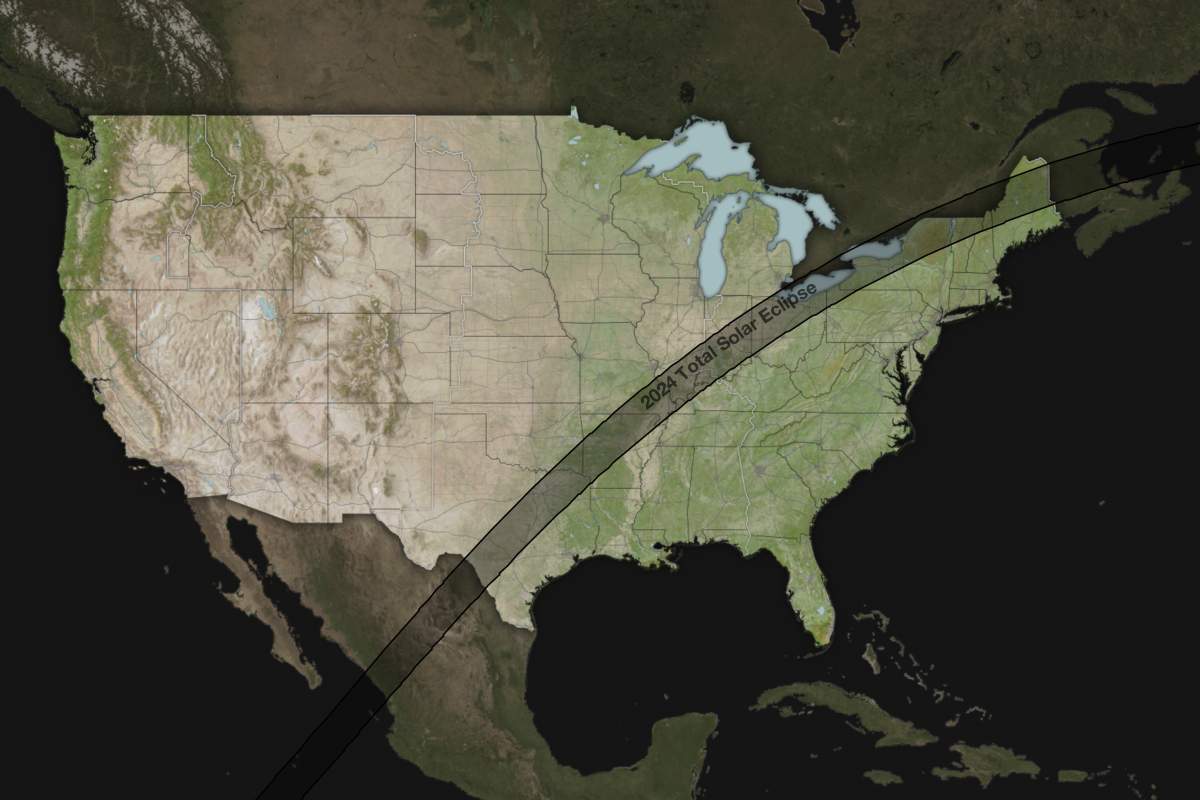If you are eagerly awaiting the total solar eclipse on April 8, there are some precautions you will want to take to protect your eyesight.

Dr. Mark Eltis, a Toronto-based optometrist, told Global News that viewers of the eclipse will need special glasses, with ISO 12312-2 rating, to protect their eyes from any possible damage.
“Those glasses are much darker than regular sunglasses,” he said. “You can’t wear regular sunglasses.”
The eclipse can provide a false sense of safety since the sun will be dimmer, but harmful rays are still present, he added.
Without proper eye protection, the light rays that do shine through will travel to the back of the eye, called the retina. That’s where the cells interpret the light and send the information to the brain. Damage from those rays can happen within a minute, Eltis said, and you won’t even feel it is happening.
“Our pupils will be more dilated because there’s less light, so the rays will go to the back of the eye and they can burn those cells that interpret the light,” Eltis said. “That’s the danger.”

You will only know there is damage “when it’s too late,” according to Eltis, and while the damage can be temporary, it can also be permanent.

Get weekly health news
Dr. Avnish Deobhakta, an ophthalmologist based in New York State, told Global News a story of a patient in New York City who was walking down the street during the 2017 solar eclipse. She looked up at the spectacle for about six seconds, realized she needed eye protection, borrowed glasses she thought were protective, and then looked at the eclipse for another 30-40 seconds.
“Unfortunately, about four hours later, she noticed that she had a defect in her vision,” Deobhakta said.
He said that they found damage in her retina in the shape of the eclipse. The sliver of the sun exposed during the eclipse had burned itself into her retina.

“The problem in New York City was that it was a partial eclipse.”
Deobhakta said that the rays of sunlight that make it past the moon during a partial eclipse, like that which will happen in Toronto on April 8, are usually the more powerful ones.
If you are watching a total solar eclipse, as will occur in certain parts of Canada, Eltis said it is possible to look at it without special glasses when it is in totality, but said it is dangerous if you are not sure when exactly that is happening.
The eclipse will pass through Ontario, Quebec, New Brunswick, Prince Edward Island, Nova Scotia, and Newfoundland and Labrador. Several cities and towns will go into complete darkness for a few minutes during the day.
The last time a total solar eclipse passed through Canada was in 1979.
A total solar eclipse occurs when the moon passes between the sun and the Earth, aligning perfectly and completely blocking the sunlight.
The eclipse will occur between mid and late afternoon in Canada, depending on location.
Even if you wear the protective glasses, Eltis suggests you look down at the ground before looking up at the sun, and then look down again after viewing the eclipse.
Deobhakta also recommended creating a projection device that you can wear to avoid any damage, as described on the Government of Canada website.
Symptoms of eye damage include blurry vision as well as black spots. If you feel something has changed in your vision, see an eye doctor, Eltis said.
— with files from Global News’ Katherine Ward and Saba Aziz









Comments